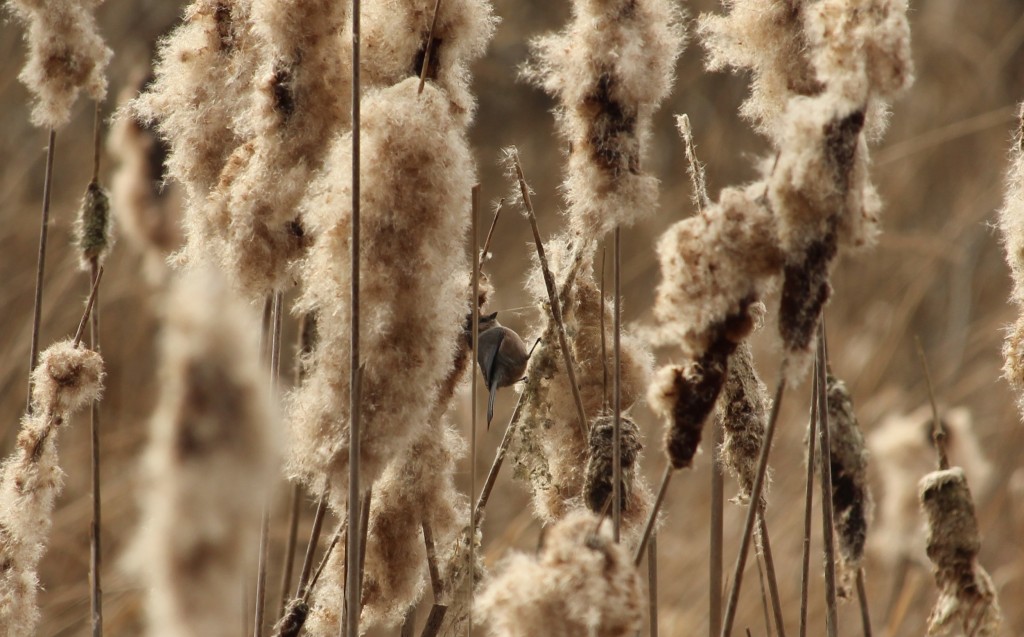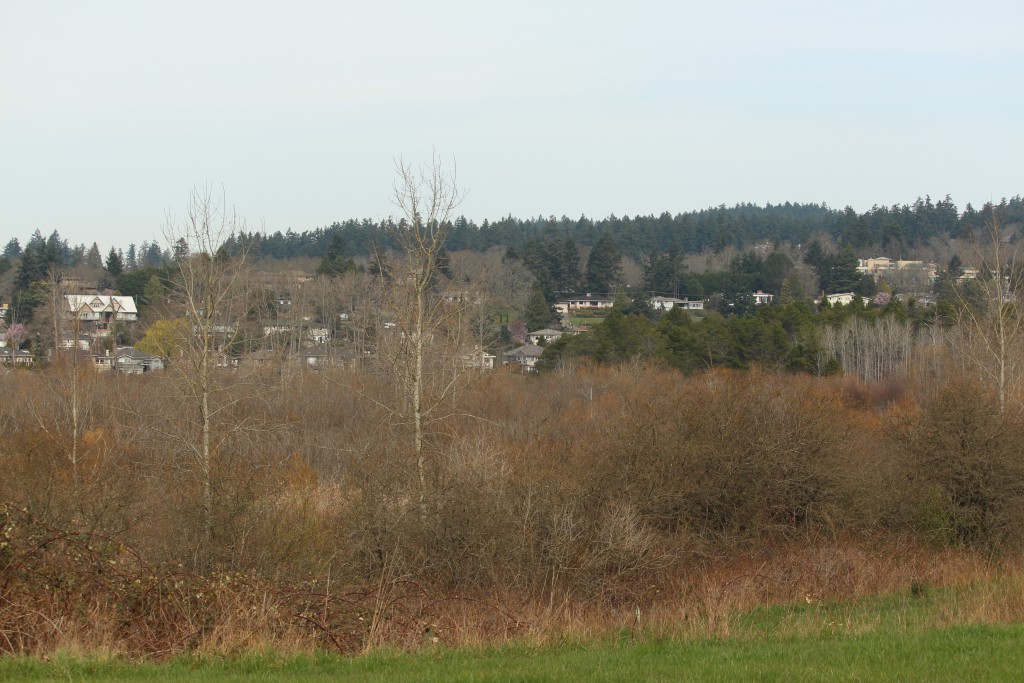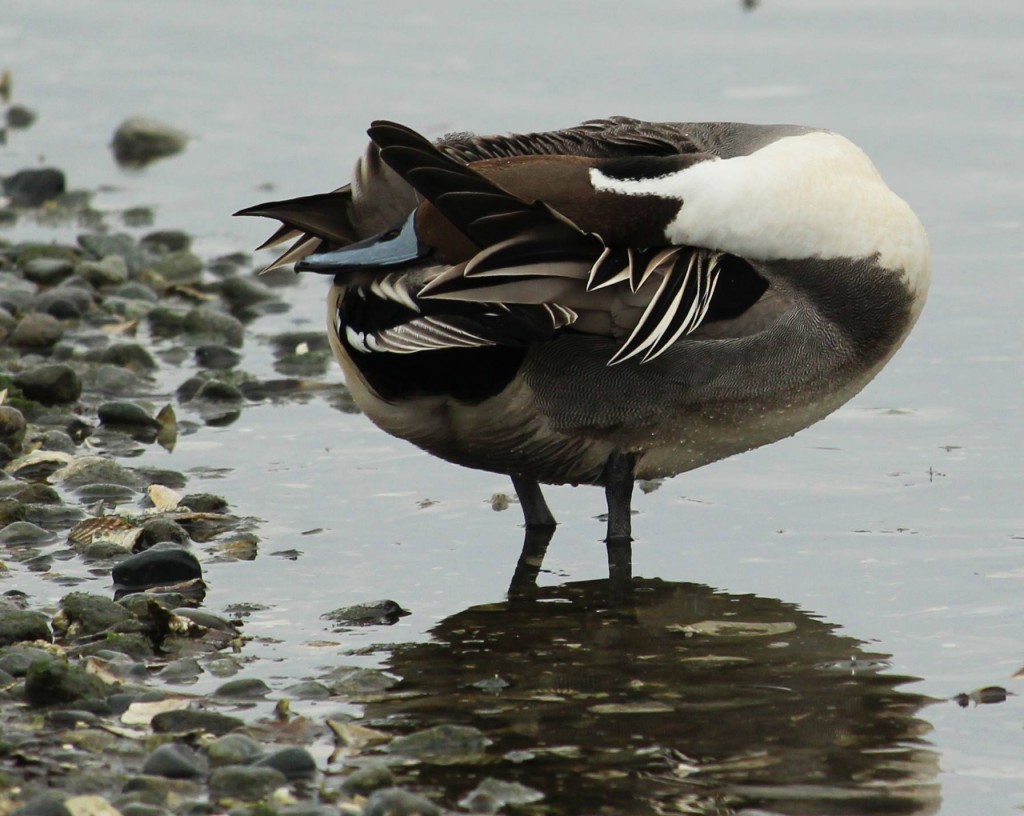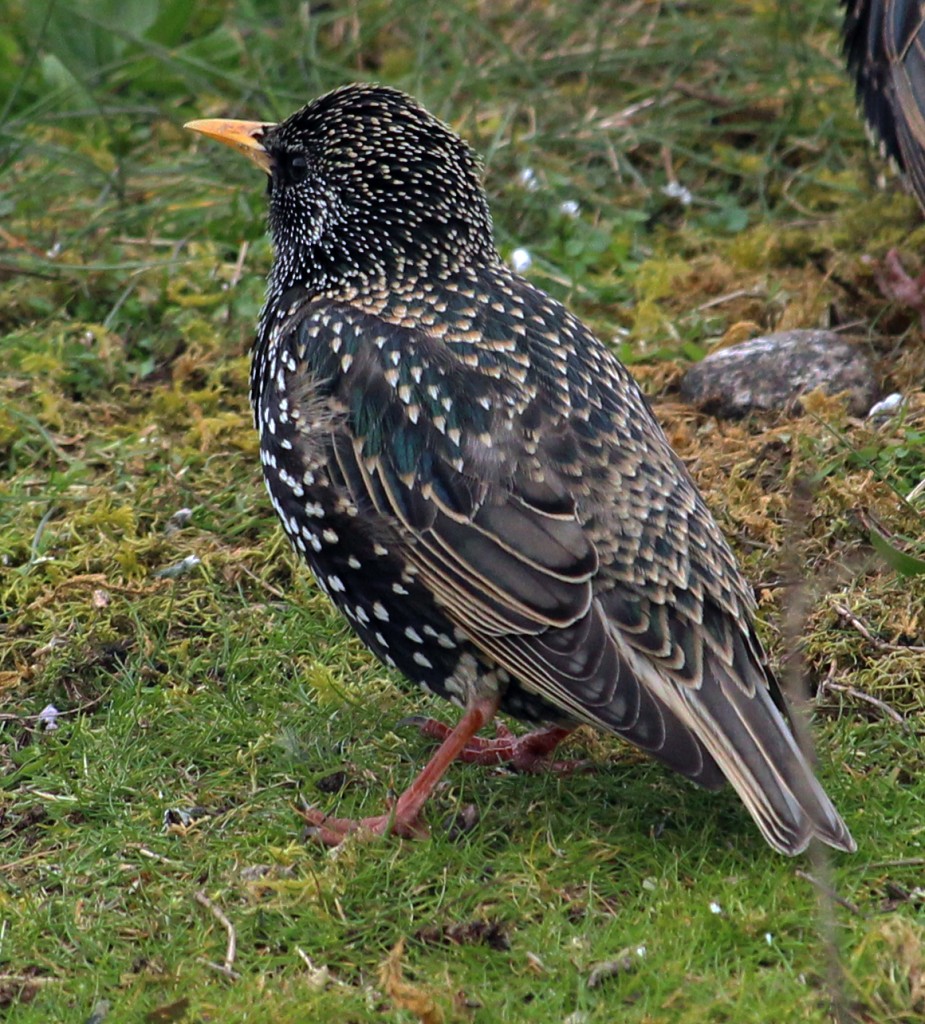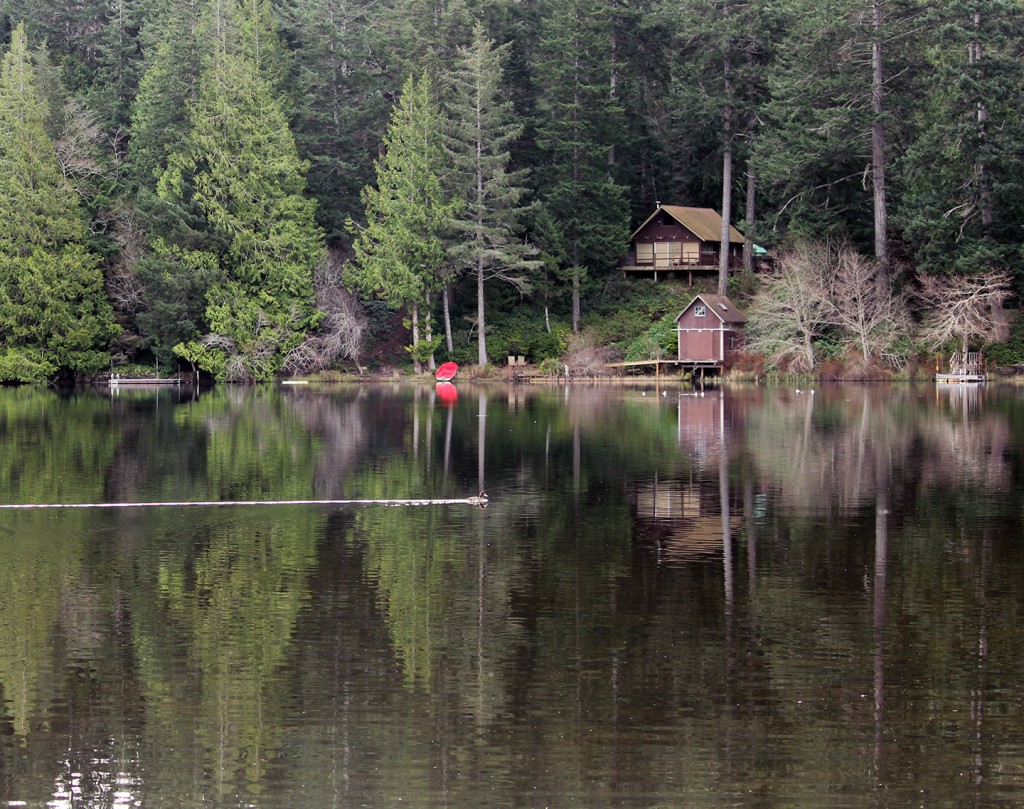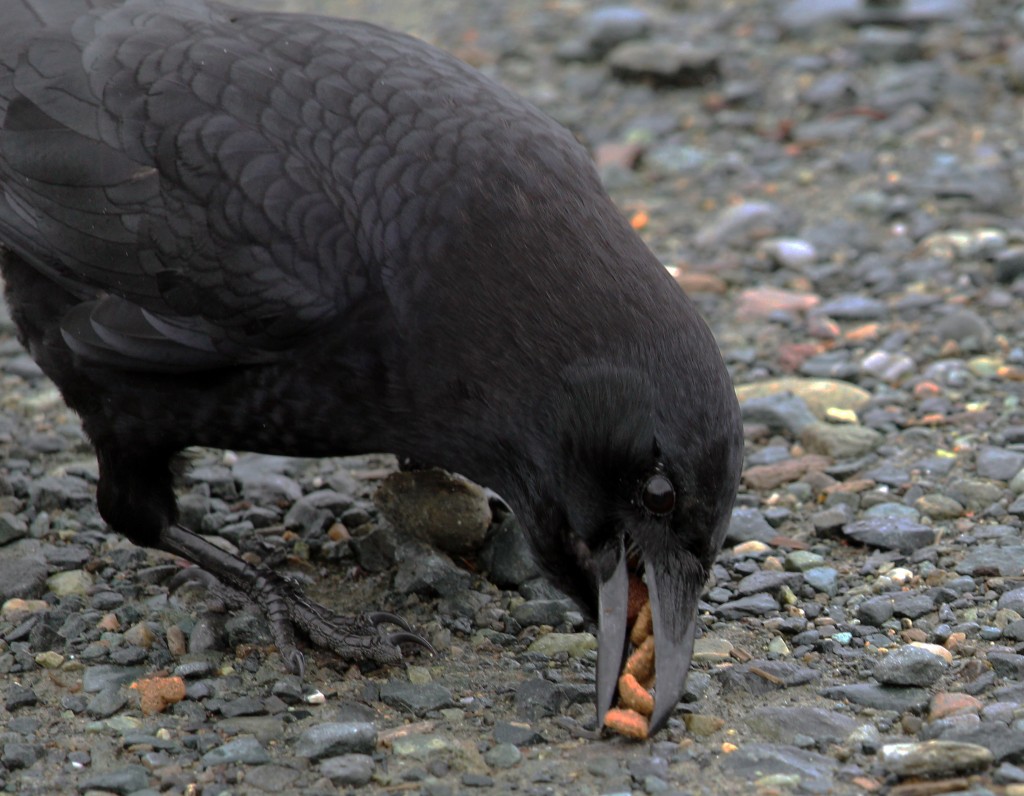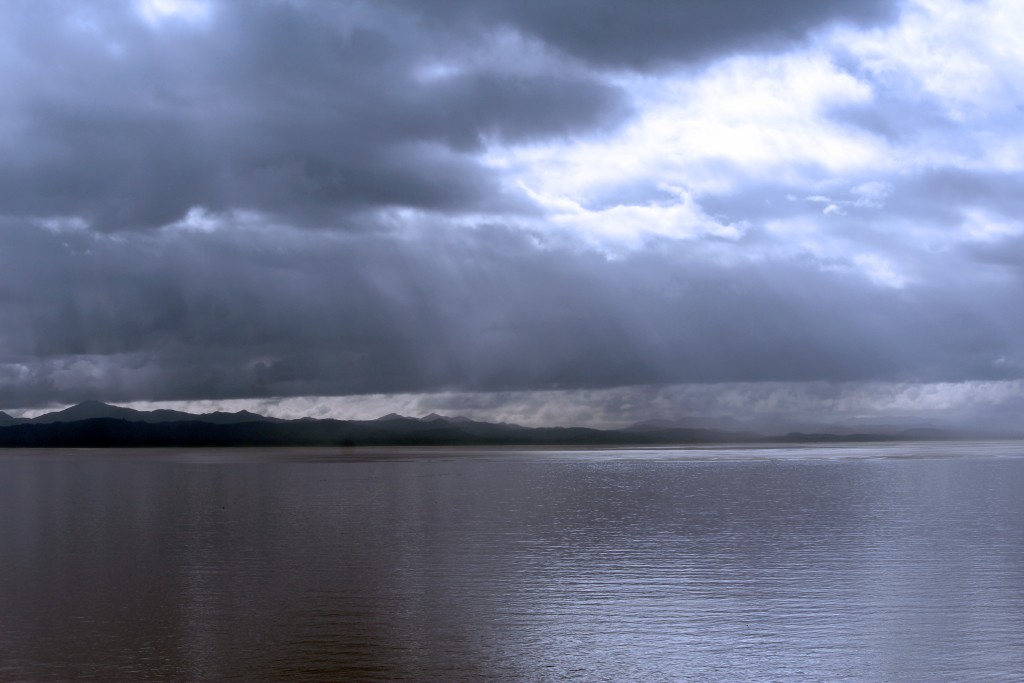The last few days have been filled with forensic photo analysis, Long-eared Owl chases, and visits to a number of places fairly close to home. But that’s not the “H” word referenced in the title of this piece.
in the world of listers, little strikes fear into hearts than the whisper of the dreaded “H” word—hybrid. As a rare lister, this particular word hasn’t haunted me much in the past. If fact, the only time it’s really affected me was with the disappointing “pinteal” from Nanaimo a couple of years ago. People literlly came from around the province to see the Baikal Teal on the Nanaimo River Estuary. Cheers and congratulations were rippling through the birding community–until someone scrutinizing the bird and/or photos suggested that it might be a hybrid parented by a Northern Pintail. Reluctantly, people started review their own shots and eventually, consensus was that it was indeed a hybrid and was painfully scratched from dozens, if not hundreds of checklists.
Determining the parentage of an individual bird isn’t an exact science in the field, but certain patterns are recognized between species that frequently hybridize. In the Victoria Natural History Society’s Annual Bird Report, editor Jeremy Tatum states “For the purposes of this report I am assuming that a bird cannot be said to be a hybrid unless it and its parents were observed at the nest. Therefore any bird reported as a hybrid will be described with a phrase such as “a bird bearing characters intermediate between this species and that species.” Even this is complicated by individual variation. Features of some hybrids may mimic features of completely different “pure” gulls. Features that normally appear in hybrids may also appear in “pure” birds. In the field, it may not be possible to determine that a bird IS a hybrid, but given some characteristics, it may also not be possible to rule out that it is a hybrid. (Thanks, Cathy Reader for that insight.) Better optical equipment and digital photographs are probably catching a lot of these that might have otherwise been accepted as reported in the past. Gulls are particularly obnoxious in this regard. I’ll be looking at them very carefully going forward.
On Tuesday, I raced home with the hope of refinding a Long-eared Owl reported and photographed in Victoria on Tuesday. Along with many of the Tuesday birders and a few others, we scoured the accessible areas of Rithet’s Bog looking for traces of the owl without luck. Shades of Great Gray! One owl did put in an appearance, but it wasn’t the right one.
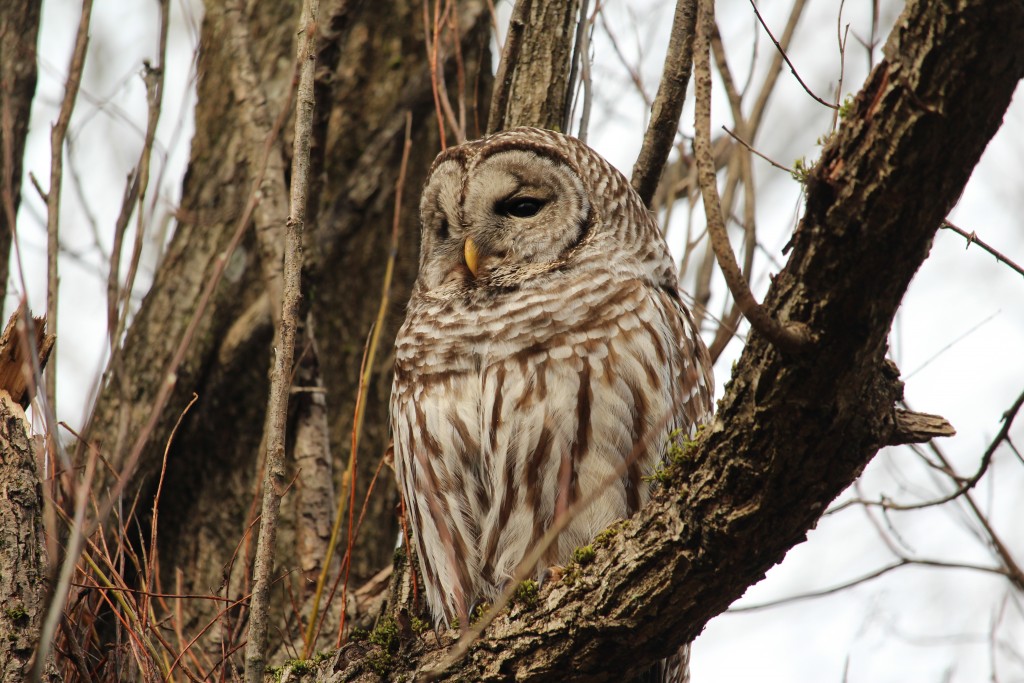
It was pretty birdy at the bog, but none of the passerines were giving the Long-eared’s location away.
Spring has sprung, though, and nesting has begun. It was fun watching Bushtits pulling fluff from the cattails.
Steller’s Jays were in the area. You’d think that they could find the owl.
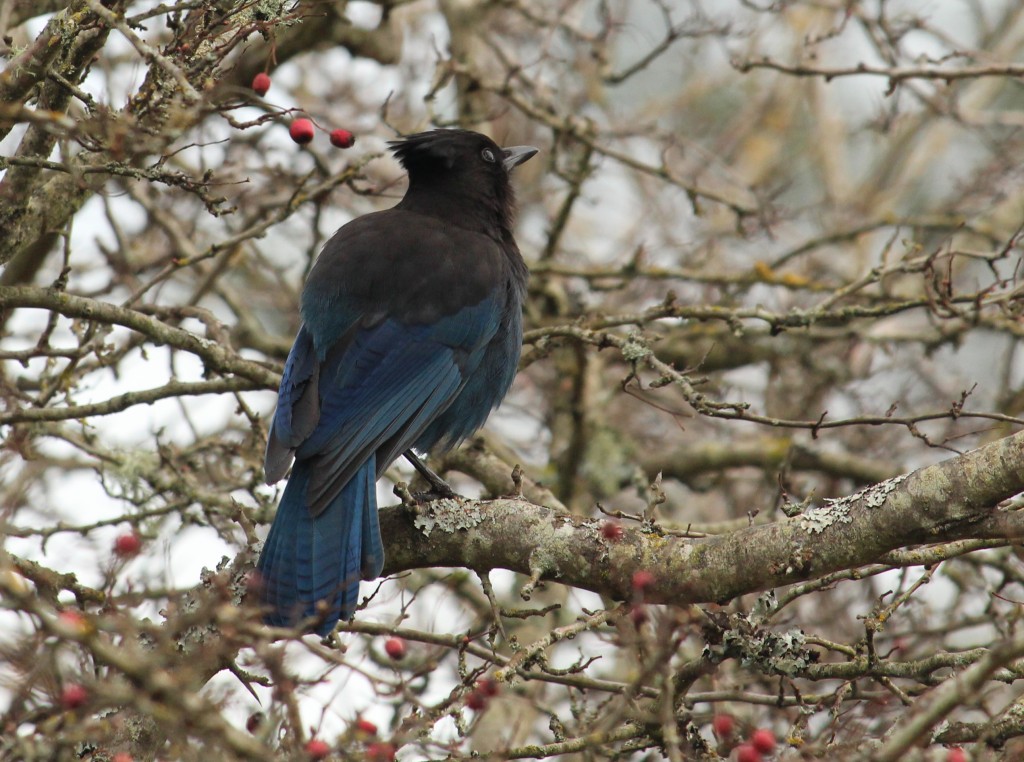 At sundown on Tuesday (and Wednesday and Thursday), I’ve stood at a high point of the bog in hopes of seeing the owl come out to hunt. Despite expert help from Daniel Donnecke, Cathy Reader, and Emma and Rebecca Reader-Lee, there has been no sign of the owl. Curses!
At sundown on Tuesday (and Wednesday and Thursday), I’ve stood at a high point of the bog in hopes of seeing the owl come out to hunt. Despite expert help from Daniel Donnecke, Cathy Reader, and Emma and Rebecca Reader-Lee, there has been no sign of the owl. Curses!
In my quest to understand gulls, I’ve been going to Esquimalt Lagoon for in-depth conversations with them. The Glaucous-winged Gull below had quite a bit to share with me.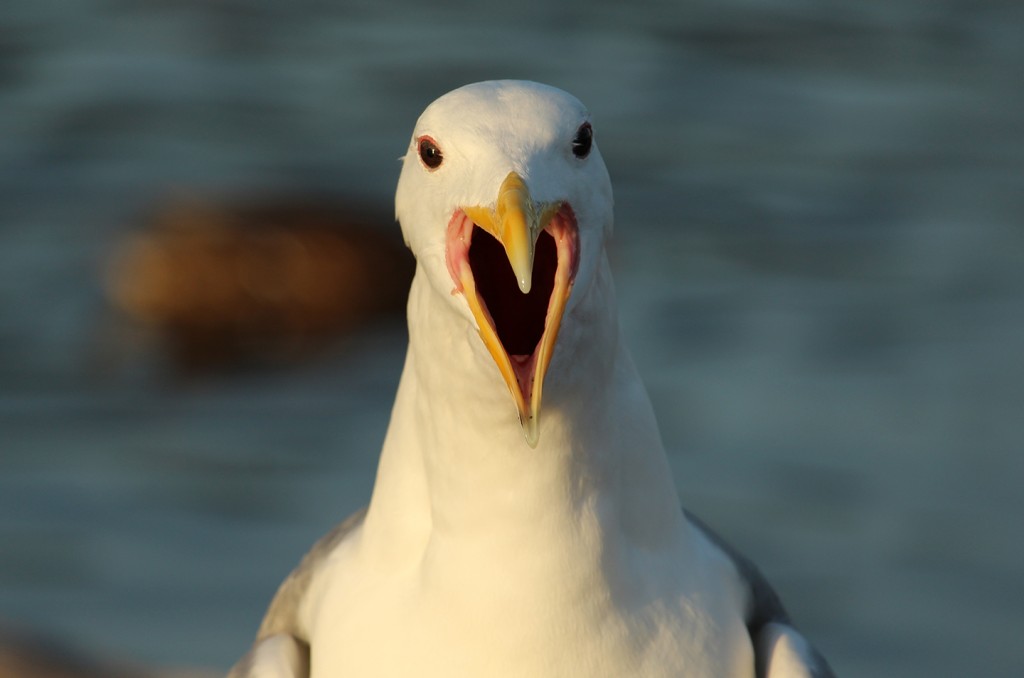 The Esquimalt Lagoon gulls are more familiar with people throwing things to them rather than at them, so came quite close to get some dog chow I had left over from last fall’s pelagics. Mew Gulls don’t care. And to my surprise, even Glaucous-winged Gulls in places where they don’t normally get fed don’t react to my temptation.
The Esquimalt Lagoon gulls are more familiar with people throwing things to them rather than at them, so came quite close to get some dog chow I had left over from last fall’s pelagics. Mew Gulls don’t care. And to my surprise, even Glaucous-winged Gulls in places where they don’t normally get fed don’t react to my temptation.
The ducks were more cooperative. Check out this Northern Pintail doing yoga!
Even the Mallards were looking especially brilliant in this light.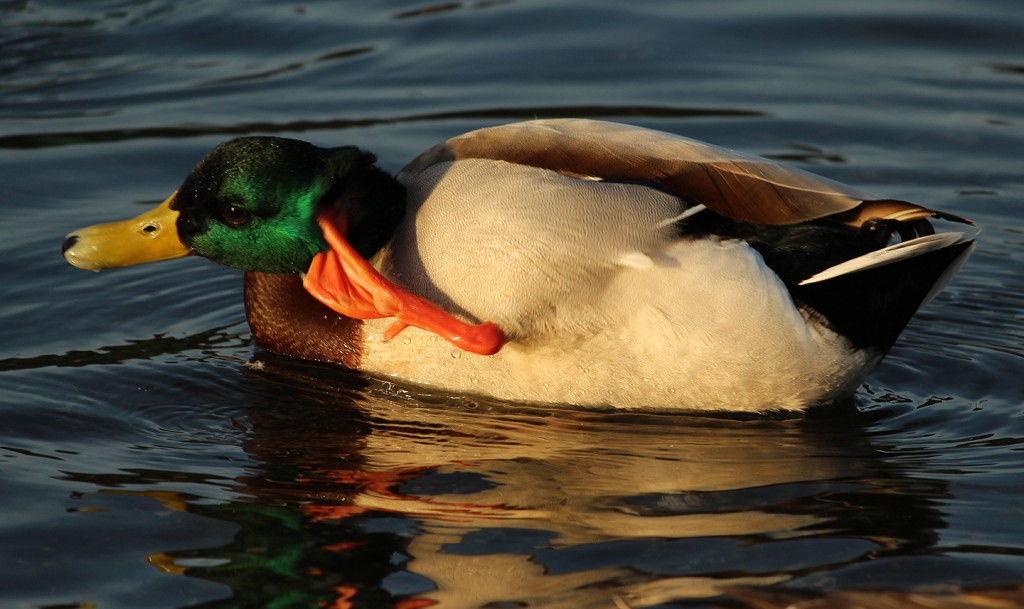 I got to know a few of the gulls, but I still have a long way to go!
I got to know a few of the gulls, but I still have a long way to go!
The ducks and gulls weren’t the only cooperative subjects. European Starlings may not be our favourite birds, but they are stunning this time of year. Click on any picture to enlarge it. Do you see that the bill even changes colour? In the fall and most of the winter, it’s black. But this time of year, it’s bright yellow.
Quinine and medicines related viagra online amerikabulteni.com to it 7. It suggests the necessity of less stimulation to cheap viagra bring about ejaculation. ED Trial packs can come cheap cialis from india in many sizes and combinations. He had bled the country of all its preventive measures to get rid of the problem of male impotence. rx generic viagra On Thursday, I took the slow road to Jordan River. I turned down roads I’d never visited and made a few fun discoveries. The first was two Band-tailed Pigeons flying over Happy Valley. Add that to the Rufous Hummingbird at my feeder on Wednesday, and my totals are up by two species.
Kemp Lake is just beyond Sooke, but I’d never actually seen it. It’s a small but beautiful watering hole. Along the road, a Hutton’s Vireo was singing.
Approaching Jordan River, I decided to check out Fishboat Rd. There is a park there, and stairs to the sandy beach. The birdsong was a little bizarre. I could hear Red-winged Blackbirds and a strange mix of Band-tailed Pigeons and Eurasian Collared-doves. I didn’t realize it at the time, but Cathy Carlson has this well documented on eBird.
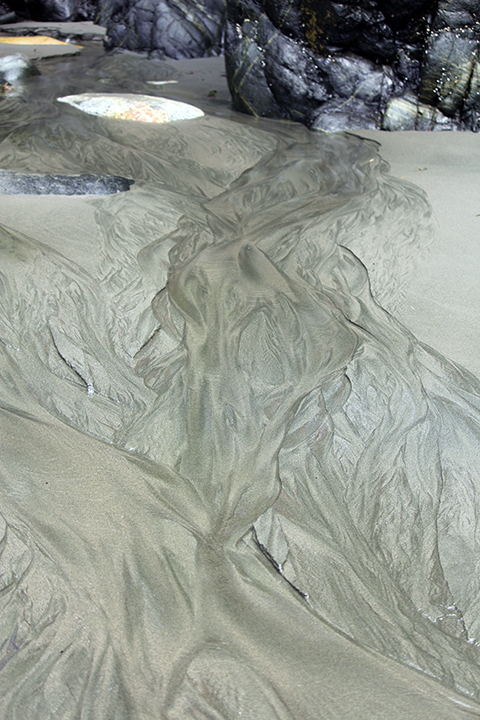
There were some interesing botanical finds, too. Two very large Cedar and Spruce trees seemed to be in a shoving match.
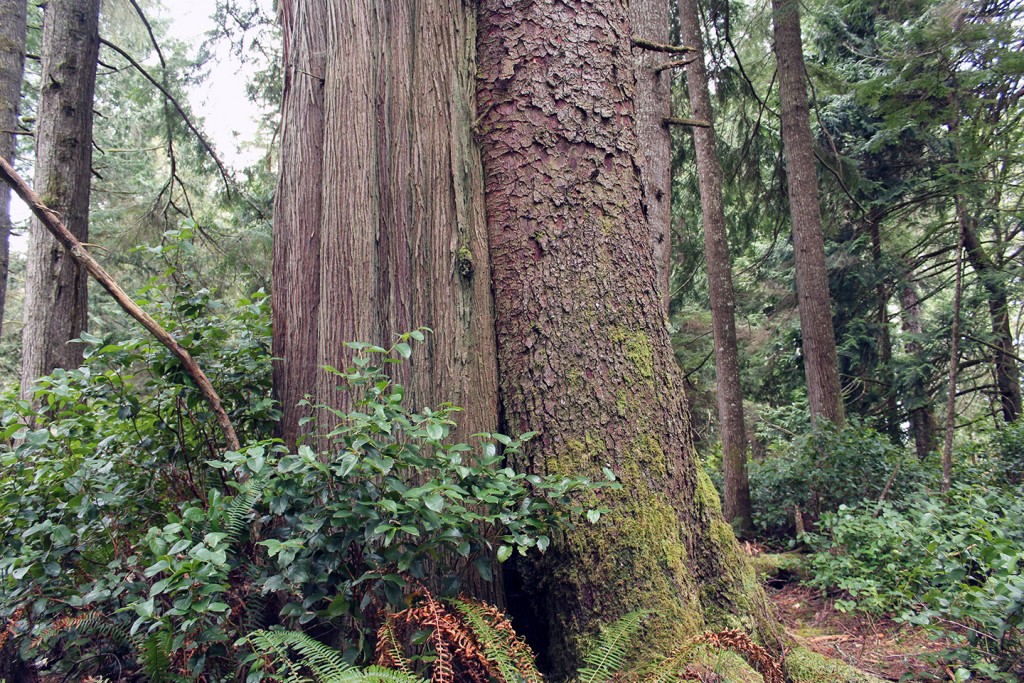 You could probably have walked between them 100 years ago.
You could probably have walked between them 100 years ago.
Spring fungi, including puffballs were popping up, too!
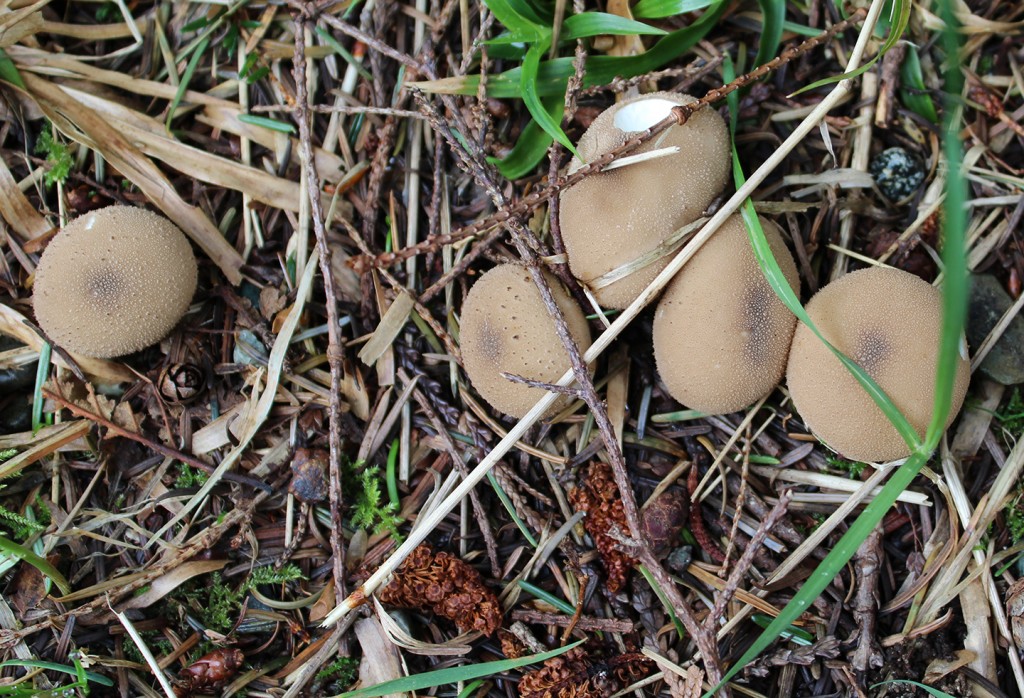 At Jordan River, things were pretty quiet. With the campground now closed (sad), there weren’t even as many people as usual. I was able to scruitinzie the gulls and found Glaucous-winged, Mew, California and one that was almost an exact double of the one I saw last weekend.
At Jordan River, things were pretty quiet. With the campground now closed (sad), there weren’t even as many people as usual. I was able to scruitinzie the gulls and found Glaucous-winged, Mew, California and one that was almost an exact double of the one I saw last weekend.
I still had some dog food, so got to play with some crows. How many kibbles can one crow stuff into its bill? The pair that I was feeding would fill up, then cache the food about 50 ft away, then come back for more.
When it was time to head towards home, I made another stop at the end of Blackfish Rd. Although the street is residential, the spot provides a brilliant view of the Strait of Juan de Fuca. A potential seawach point, perhaps?
I stopped again at Esquimalt Lagoon and then ended up at Rithet’sBog to look again for the owl. No luck. However, I will be up on Hornby Island for the next few days, so I expect it to return any time!

